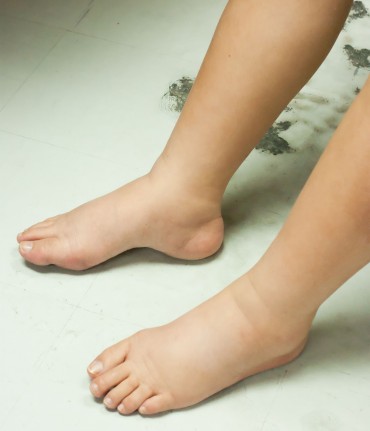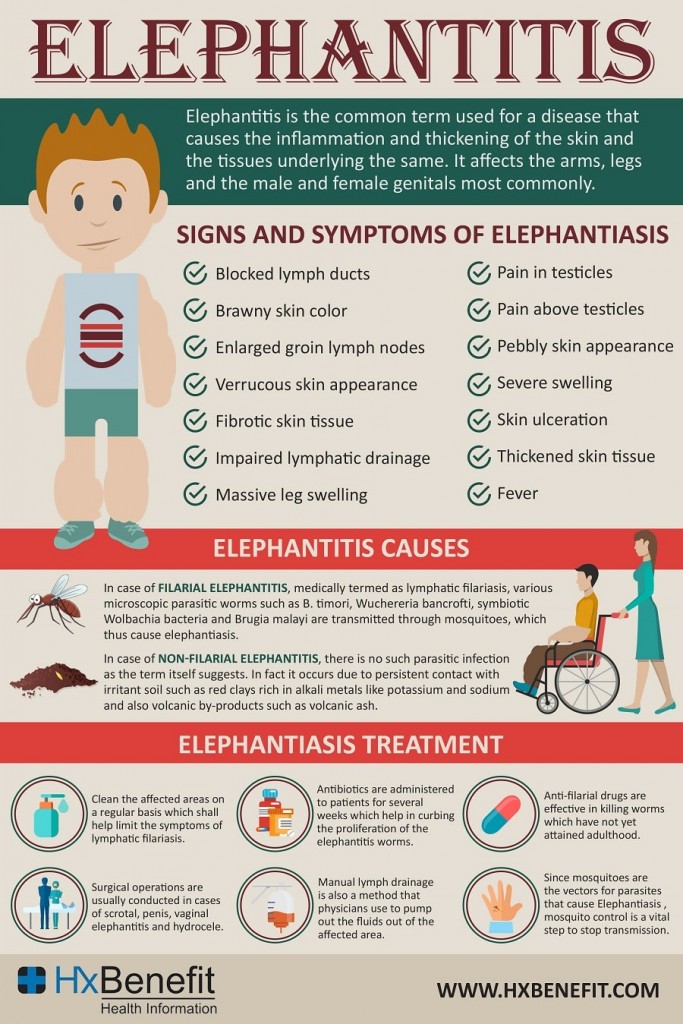Our body is a huge machine with different functioning systems built inside it. One such system is the lymphatic system that is made up of a huge network of nodes and vessels within the body.
The basic function of this network of nodes and vessels is to make sure that any kind of tissue fluid outside the bloodstream is filtered neatly from debris or attacking microorganisms and only then is transferred into the bloodstream. Such filtered tissue fluid is known as lymph. When there’s a malfunction within this lymphatic system, a lymph node or lymphatic vessel may get inflamed resulting in a condition known as lymphadenitis or lymphangitis respectively.
Once inflamed, the drainage functionality of the lymphatic system stops working and the tissue fluid gets collected within the lower limbs resulting in the swelling of the area. This condition is known as lymphedema. If the condition becomes permanent, it can result in a condition known as elephantiasis.
Introduction to Elephantiasis (or Elephantitis)
In medical terms, Elephantiasis or Elephantitis is a condition that occurs due to lymph accumulation resulting in thickening and hardening of the skin from excessive swelling. While this medical condition is mainly spotted in the lower limbs, there are also cases where the condition was detected on the breasts and arms in some patients.
Types of Elephantiasis
Basically, there are two ways by which patients can get Elephantiasis. In the medical world, the terms Elephantiasis and lymphatic filariasis are often used as synonyms, however, you must know that lymphatic filariasis occurs due to infection by the filarial worm, whereas Elephantiasis is used to indicate the gross swelling caused by lymphedema.
While lymphatic filariasis is one of the reasons for Elephantiasis, the condition may also occur due to reasons such as exposure to certain types of soils without any sort of infection. While Elephantiasis is the correct term, there’s another incorrect term Elephantitis that’s quite commonly used around the globe. The word gained popularity because of Elephantiasis misheard.
Treatment for Elephantiasis
Treatment of Elephantiasis varies based on the severity of the condition. Sometimes drugs are enough to treat Elephantiasis, whereas surgical measures are also used if the condition is spread severely throughout the lower body.
A treatment procedure focusing on hygiene and avoidance of any contact with the soil known as podoconiosis is highly recommended for treating Elephantiasis. Traditional methods like compression and elevation of the legs are also used to treat this condition.
Medication for Elephantiasis
Following medicinal drugs are recommended by specialist doctors to treat filariasis by eliminating the parasitic worm.
- Diethylcarbamazine(DEC) – This is an anthelmintic drug which is prescribed to eliminate microfilariae and adult worms. There’s a high immune response because of the death of the worms resulting in some side effects.
- Albendazole– Another anthelmintic drug which is used along with diethylcarbamazine (DEC).
- Ivermectin– This broad spectrum anti-parasitic drug is prescribed along with albendazole, instead of DEC, in specific locations where river blindness is widespread.
Besides these medications, antibiotics are also prescribed to cure bacterial cellulitis, a condition often associated with massive lymphedema and elephantiasis.
The Ultimate Solution for Elephantiasis is Surgery
If the condition of elephantiasis gets extreme, the only solution is surgery. In the surgical process, the excess tissue and associated lymph nodes, as well as any tissue fluid accumulated within the affected area are removed surgically. However, the surgical procedure isn’t the ultimate cure because unless there’s an effective lymphatic drainage in action, the swelling would be back and the condition will revive once more.


























































Comments